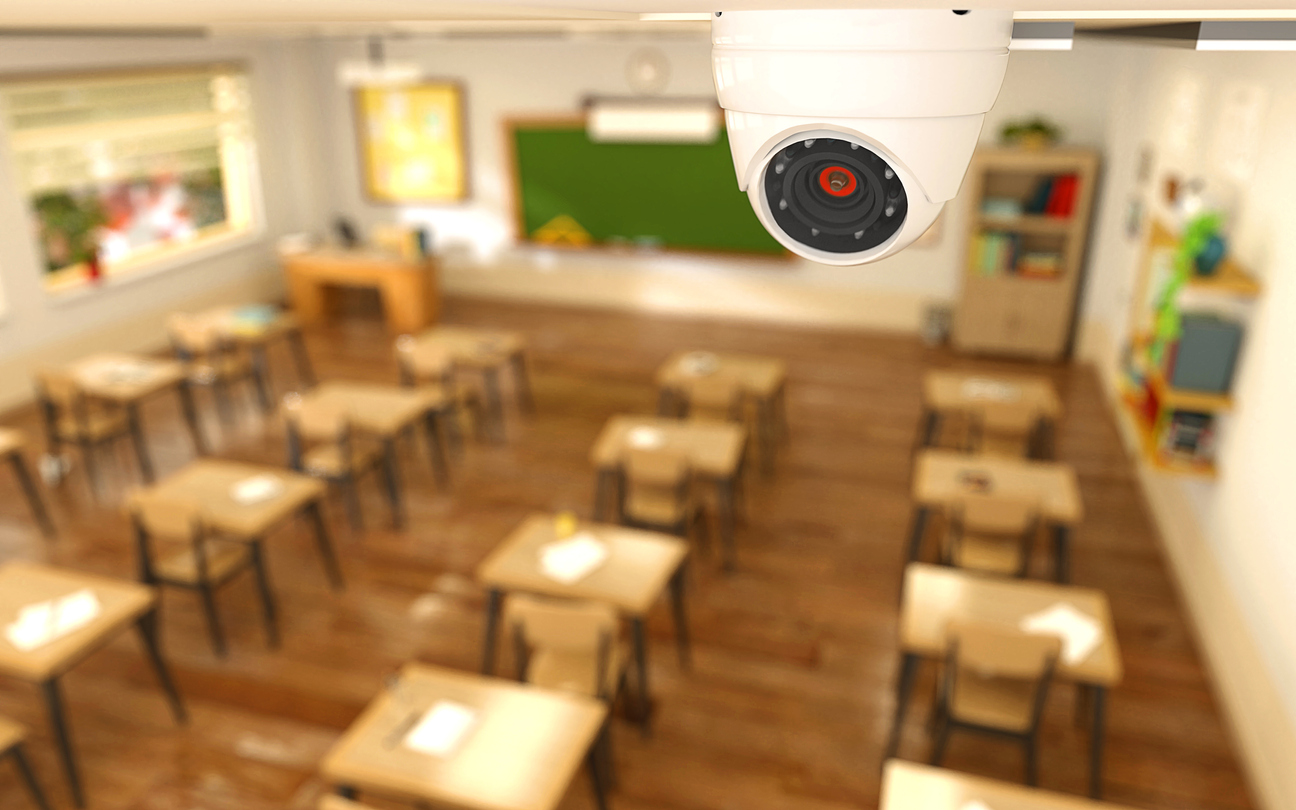Electronic security technologies have changed the school security landscape with new and more effective ways to protect our children
There are many techniques schools can use to increase security, including hiring security officers for perimeter monitoring, limiting and screening visitors, implementing practice drills, and educating staff and students about best practices. However, advances in electronic security may provide the most comprehensive solution for schools to make these tactics work in tandem and deliver real campus protection.
Here are three top electronic security solutions that can be deployed to improve school security.
1. Intercom and alarm systems
One effective way to integrate electronic security into a school is to use
entry controls like intercoms outside the main door or in its vestibule. This way visitors can be screened and questioned before they ever enter the school. Intercoms are also commonly used throughout the school for communication purposes, which can be useful in an emergency.
Alarms can also be implemented so that if there is an unauthorized intruder or another emergency, everyone is notified immediately. These systems can be linked to local law enforcement and first responders to provide faster assistance in the event of an emergency.
Intrusion systems that activate an alarm can also be maintained for non-school hours, and will be triggered if a door or window is broken or if any kind of motion is detected. Advances in lighting, including LED lights that save energy and reduce costs, can be paired with other detection and trigger devices to enhance the overall school security system.
2. Access control systems
Schools may have several points of entry, and
an access control system will help staff better manage all of them. Common electronic access control systems that schools should integrate include readers for key fobs or cards that only authorized individuals carry.
Mobile access control is also gaining traction in organizations, meaning authorized personnel have a code on their smartphone that can be scanned for access. Devices must be able to support Near Field Communication (NFC) or Bluetooth Low Energy (BLE) to be used in these solutions.
These methods also aid the school security plan because electronic data about who entered the school and when can be gathered and referenced, and certain staff can be granted access only to certain doors and areas.
However, sometimes key fobs or cards can get into the wrong hands. Some schools are now integrating biometric access control systems, where an individual has to pass a fingerprint, retina, or voice recognition test for entry. While these systems have downsides, they protect against a key being stolen.
It’s also wise for all main traffic to the building to be restricted to one door or entry, so that all other entry points can be locked at all times. The office or area for in-person verification should be located just inside the main doors for better monitoring.
3. Video surveillance
Surveillance cameras can work hand-in-hand with access control systems for entry. For example, security guards can look at live video of who is trying to gain access to the school and open the doors or restrict access as needed. This requires a holistic, continuous monitoring plan, so adequate staff is a key ingredient to this kind of security solution.
Cameras can be placed outside of primary and secondary entryways, and also throughout the school’s hallways and main areas. Some intercom systems can combine voice and video so security guards can communicate with visitors in real-time.
To ensure connectivity and immediate transfer, cameras should support Internet Protocol (IP) video, which requires a connection to a network.
Thermal imaging cameras are also an option for schools. These cameras can detect human activity by sensing infrared radiation as light, which helps security teams monitor activity at night when intruders are not as visible.
Integrating video surveillance into the school security plan provides the greatest amount of visibility and complements other methods of access control.
Creating a comprehensive security plan for a school involves many steps and considerations. Electronic security methods are effective in further protecting the organization from risks of unauthorized intruders. However, it is important to remember that the security plan needs to be regularly assessed and updated as new technologies emerge.
When you need to enhance your security plan for a school or similar organization, Unisol International has a large selection of security and
access control products. These include video surveillance cameras and supporting devices, security video management software (VMS), mobile access control systems, and biometric access control solutions.
Contact Unisol International to learn more about how our solutions can help you secure your facility.
